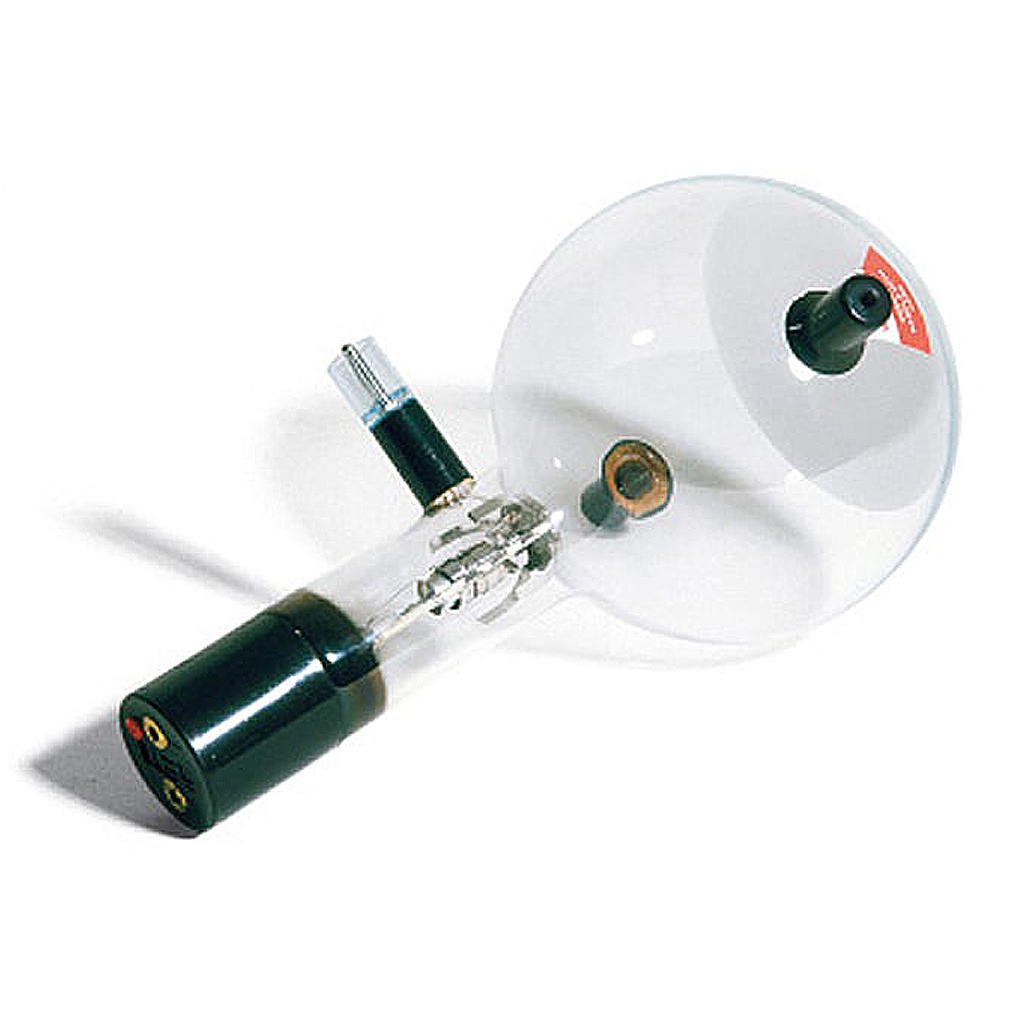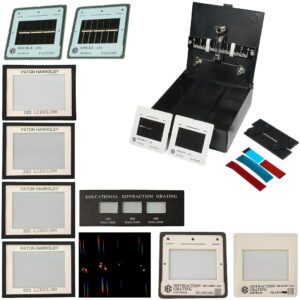ELECTRON DIFFRACTION TUBE ‘D’: 6.3-Volt AC
Highly evacuated electron tube for demonstrating the wave nature of electrons through the observation of interference caused by passage of electrons through a polycrystalline graphite lattice (Debye-Scherrer diffraction) and rendered visible a fluorescent screen. Also intended for determining the wavelength as a function of the anode voltage from the radii of the diffraction rings and the lattice plane spacing of graphite, as well as confirming de Broglies hypothesis. Specifications: Max. filament voltage: 6.3 V AC, Max. anode voltage: 5 kV, Anode current: approx. 0.1 mA at 4 kV, Lattice constant of graphite: d10 = 0.213 nm; d11 = 0.123 nm. Weight 0.281 kg




